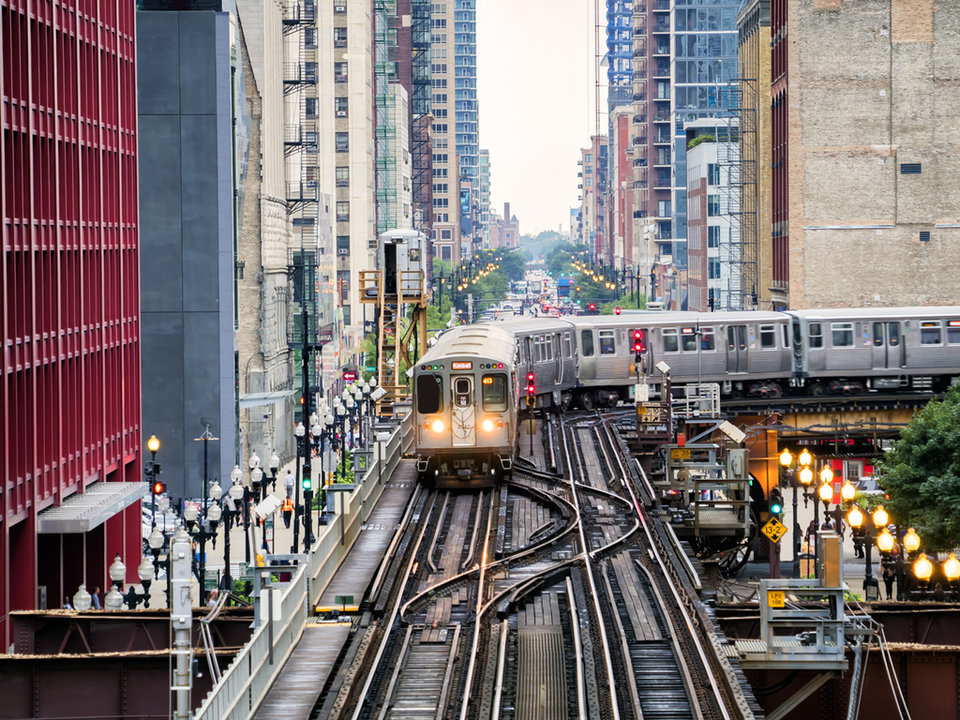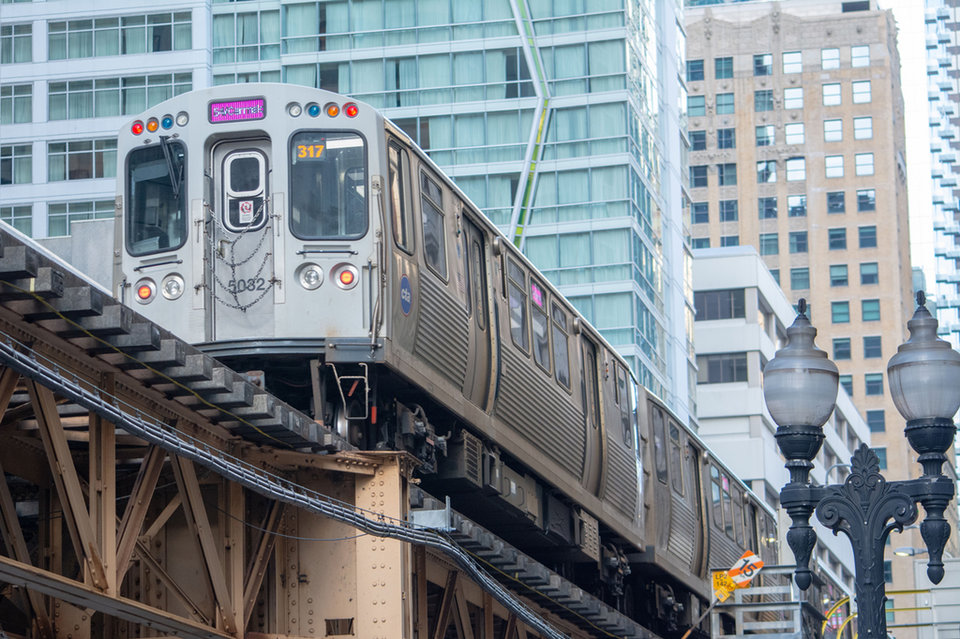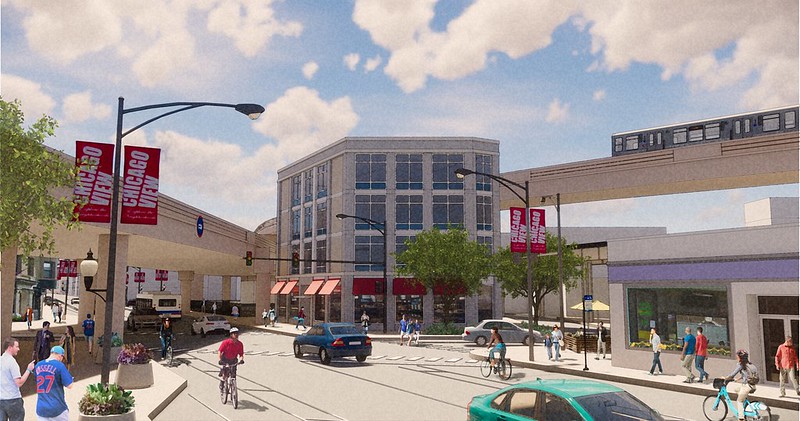The Red Line runs through one of Chicago’s most densely populated neighbourhoods.
A long-overdue renovation
At the centre of the initiative is the L’s struggling Red line, the busiest part of the network and one of its oldest, with some sections operating since May 1900.
It runs from the northern area of Chicago to the south along some 42km of tracks flanking Lake Michigan, serving key areas such as the so-called Loop – the vibrant neighbourhood hosting Willis Tower and the Art Institute of Chicago – as well as Chinatown and some riverside beaches.
A pivotal gateway to and from the centre, it is used by a staggering 240,000 riders during weekdays, accounting for almost 40% of all station entries operated by the CTA.

Trains running through the Loop in central Chicago.
The whole line is currently being renovated as part of the operator’s Red Ahead programme, with most of the attention particularly focused on the Red and Purple Modernisation (RPM) corridor, an overcrowded section in the north of the city.
Primarily constructed in 1924, the corridor stretches through 15km of tracks that are reaching the end of their lifespan, requiring costly modernisation and maintenance works.
Exacerbating the issue, the Red Line runs through one of Chicago’s most densely populated neighbourhoods, where ridership has almost doubled during morning and evening rush hours in the space of five years.
Rebuilding and modernising tracks
“With current infrastructure constraints, the Red Line has reached capacity, which means we cannot add more trains during rush periods,” the CTA said in a statement.
“If nothing is done, CTA will continue to be unable to add more trains to accommodate riders, trains will become more overcrowded, and passengers wait times will increase.”
This is where the RPM Programme comes in. A $2.1bn initiative set to be completed by 2025, the scheme will focus on improving services across the corridor through two major sub-projects.

The L train running through Chicago.
“We are rebuilding track structure and stations on the city’s busiest rail line while continuing to operate rail services,” explains CTA spokesperson Tammy Chase. “To accomplish this, we plan to complete reconstruction work in two stages, with station closure, and alternating two-track services.”
On the one hand, the CTA will rebuild and modernise the tracks and platforms between the northern stations of Lawrence and Bryn Mawr from 2020.
Under contractor Flour and Walsh, the stations included in the project will receive updated structures and viaducts, as well as new elevators, wider platforms, real-time information boards and will become more accessible for wheelchair users.
We are rebuilding track structure and stations on the city’s busiest rail line while continuing to operate rail services.
If we don’t find a way to rebuild the Red-Purple line, it’s basically going to fall apart.
The Belmont Flyover

An artist’s rendition of the red-purple bypass. Image: CTA
The most significant part of the project is the so-called Red-Purple Bypass, or Belmont Flyover, which will comprise the construction of elevated tracks along a 3km section located a few stops south of Lawrence station.
The bypass is being built to unravel one of the CTA’s biggest dilemmas: an area of intersection of three different lines – Brown, Red and Purple – at Belmont station.
Having been built over a century ago, this three-way junction works as a stoplight where trains from all three lines have to halt and wait for others to pass before continuing.

The red-purple bypass from another angle. Image: CTA
However, over time the section came into conflict with growing ridership in the area. This, in turn, called for more trains, which couldn’t be added due to the structure of the junction.
Speaking to local media earlier in September, CTA president Dorval Carter said the issue required immediate intervention: “I remember when [CTA senior vice-president for infrastructure Chris Bushell] told me, if we don’t find a way to rebuild the Red-Purple line, it’s basically going to fall apart.”
As a result, the new bypass will separate the grades, allowing for a 30% increase in service during peak hours and eliminating the conflict point among the three lines.
The need to limit disruption
With works set for completion by 2025, the CTA is looking at ways to minimise disruption during works, explains Chase. “Two stations would be open in the four-station corridor during both stages of construction,” he says.
Yet, with the Red Line accounting for a great part of the operator’s ridership, Chase says the CTA has come up with a few other solutions to keep services running while the Red-Purple Bypass is being built.

The CTA is attempting to minimise disruption in Chicago during renovation works.
“One challenge is that this construction is occurring in densely populated areas of Chicago,” he explains. “To minimise impacts as much as possible, our outreach to the community is frequent and we’re providing assistance to affected residents such as alternative parking locations for people whose garages are blocked by construction.”
Residents will also be able to consult and provide feedback on works, traffic, noise and dust through a dedicated community project office located nearby.
Upon completion, the CTA forecasts the network will be able to handle 7,200 passengers per hour, a 30% increase compared to now. In addition, solving the intersection dilemma will mean trains will run 60% faster.
Our outreach to the community is frequent and we’re providing assistance to affected residents